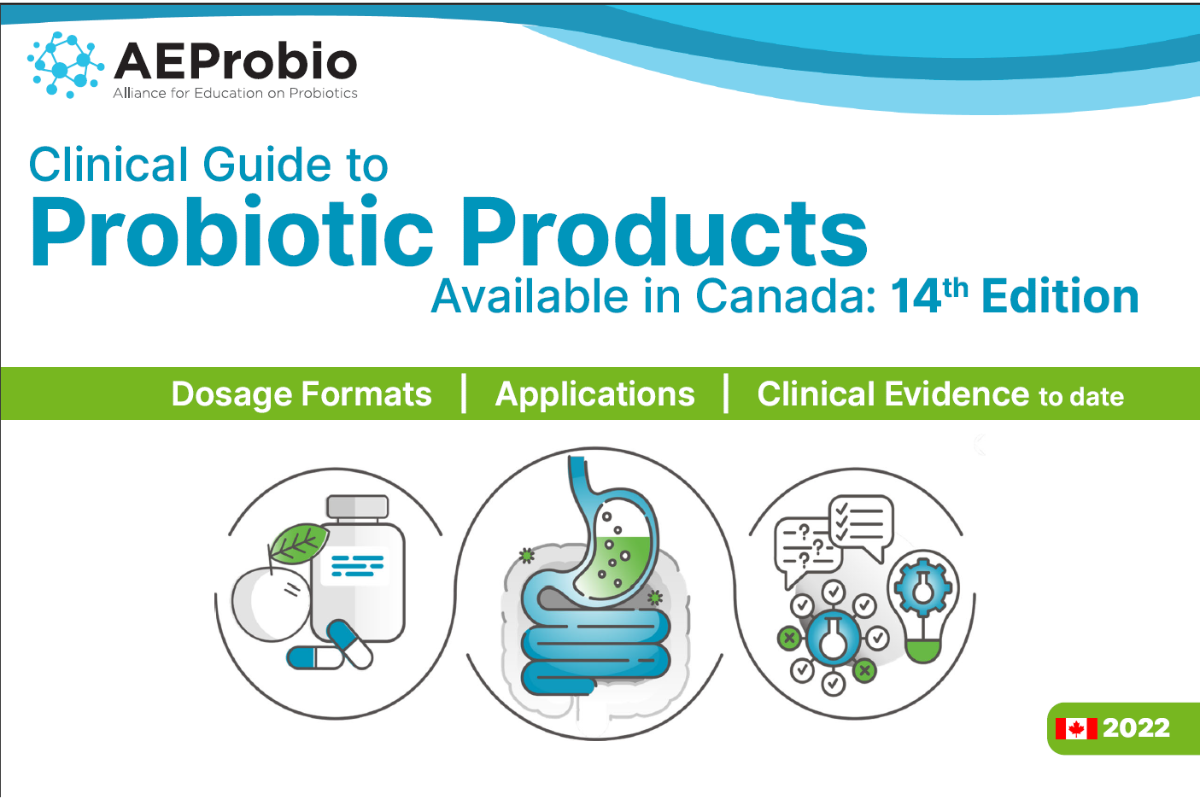PROBIOTICS IN IMMUNE HEALTH
PROBIOTICS

It's that time of the year again. Summer is over. Schools are back in session. Flu season is approaching quickly. And, to further complicate things, the COVID-19 pandemic is not showing signs of ending.
We often see and hear marketing messages for products that claim to 'boost the immune system'. Wouldn't we all welcome a solution that primes and prepares our immune defences when we need them?
Viral respiratory tract infections, or RTIs, are the most common types of seasonal infections.
Within the past decade, research into the importance of our microbiota on immune system function has increased exponentially. There is interest in understanding the role of microbiota modulation and bacterial therapeutics through dietary and pharmaceutical interventions. Probiotic bacteria have been studied for immune function modulation in respiratory tract infections and common infectious diseases. The results of those studies have been very positive.

IMMUNE HEALTH IN THE TIME OF THE PANDEMIC
Probiotics have wide-ranging and positive impacts on human health and disease.
- The ability to modulate the immune system is one of the most plausible mechanisms underlining the benefits probiotics have on human health. Probiotics have been found to improve innate immunity and modulate pathogen-induced inflammation via toll-like receptor-regulated signalling pathways [1].
- The meta-analyses of probiotic clinical studies on RTIs show that specific probiotics can lower the incidence and duration of mild RTIs in children and adults [2] .
- Recent evidence suggests that probiotics might help prevent COVID-19 infection when used alongside other treatments [3].
What would that mean in the real world? Could probiotics minimize the risk of developing RTIs and ease the burden on individuals and society?
A 2019 US-based analysis showed that probiotics positively impact health care and reduce the economic burden of flu-like RTIs. Improved disease outcomes translated into considerable cost savings for the patient and society [4]. When productivity loss is included, total savings for society represented $784 million or $1.4 billion USD per year, depending on the model used for analysis. Subgroup analyses demonstrated an incremental benefit of probiotics in at-risk groups. This modelling study confirmed the findings published in 2016, looking at the impact of probiotic consumption on RTIs in Canada. The 2016 Canadian-based analysis was supported by the Alliance for Education on Probiotics [5]. A projection of corresponding cost reductions amounted to Can $1.3–8.9 million from the healthcare payer perspective and Can $61.2–99.7 million when productivity losses were considered.
PROBIOTICS ARE A PLAUSIBLE INTERVENTION

DRAGANA SKOKOVIC-SUNJIC
AEProbio | Canada

Bio...
Dragana Skokovic-Sunjic is a clinical pharmacist and leader in knowledge mobilization for probiotics. Since 2008, Dragana and a highly-qualified scientific advisory committee have been translating scientific research in this field. Dragana has authored 'Clinical Guide to Probiotic Supplements Available in Canada' since 2008 and 'Clinical Guide to Probiotic Products Available in the US' since 2014. Relied on by thousands, this practical clinical tool is reviewed and updated annually to reflect the latest evidence and includes new probiotic products in Canadian and US markets. Dragana's dedication to promoting evidence-based education in this field resulted in establishing the Alliance for Education on Probiotics or AEProbio (AEProbio) in 2015. AEProbio supports publishing the Clinical Guides to Probiotic Products and other educational resources for healthcare professionals and consumers.

Probiotics consist mainly of bacteria and can include beneficial yeasts naturally present in fermented foods. They may be added to food products or available as dietary supplements (USA) or natural health products (Canada). It is important to note that not all foods and dietary supplements labelled as "probiotics" on the market have proven health benefits.
The International Scientific Association for Probiotics and Prebiotics defines probiotics as "live microorganisms that, when administered in adequate amounts, confer a health benefit on the host" [6].
Probiotics are identified by specific strain, with the name including the genus, the species, the subspecies (if applicable), and an alphanumeric strain designation. [7]. Because the effects of probiotics can be specific to certain probiotic species and strains, recommendations for their use in the clinic or research studies need to be species and strain-specific [8]. Analyzing pooled data from studies of different types or strains of probiotics can result in misleading conclusions about their efficacy and safety.
Misuse of the term probiotic has skyrocketed in recent years. Using the word 'probiotic' when discussing any live culture containing products without regard to strain, the number of live bacteria in it, or the proven benefit, is misleading and irresponsible. In addition, the term probiotic is too often used as an umbrella statement applied to any non-specific probiotic strain. The headlines such as "Probiotics do not work" should read: "X probiotic strain failed to show benefit for Y condition." Similarly, we should not state that "probiotics can help minimize common infectious diseases." Instead, a specific strain(s) should be mentioned, applied to the particular population, and supported by published evidence.
In reflection of their popularity, a 2017 market survey has identified probiotic supplements as the driving force of the functional foods industry, projected to reach $64 billion USD by 2023 [9] .
However, due to the absence of appropriate regulations, consumers do not always know what they're purchasing. Between 2016 and 2017, the Food and Drug Administration inspected more than 650 facilities producing dietary supplements and found that more than half had violations. Issues with the purity, strength and even the product's identity have been observed [10].

UNDERSTANDING THE PROMISE OF PROBIOTICS DURING A TIME OF IRRESPONSIBLE MARKETING AND MISSED OPPORTUNITIES
To prevent the misuse of the term "probiotic", Dr. Gregor Reid, a recognized world expert with over 40 years of academic work focused on probiotics, proposed the following three critical elements in determining the validity of a probiotic:
"1. Evidence that the strain(s) has been tested in a randomized, controlled or equivalent human trial, in either a heterogeneous population or stratified based on defined characteristics of host or microbial genomics.
2. The dose and viability in the product are equal to that of the human trial(s).
3. Whole genome strain characterization and transparently declared strain designation are provided." [11]
It should be noted that the above recommendations have been a foundation for the work done in preparing the Clinical Guide to Probiotic Products. As I am the author of the Clinical Guide to Probiotic Products, let us use the recommendation of ISAPP, which is quoted below:
"Want some guidance on knowing which probiotic products have been tested for which clinical benefits, and understand the level of evidence supporting those benefits? Check out the (new] versions of Clinical Guide to Probiotic Products Available in the USA and Clinical Guide to Probiotic Products Available in Canada. This Guide is updated annually. Evidence is reviewed independently by six academic experts and graded as Level I (highest), II or III. A grade of Level I requires evidence from at least one properly designed randomized human trial." [12] [13]
Currently, numerous evidence-based probiotic products containing single or combination strains in various dosage formats are listed in both USA and Canadian Guides. Some of them are listed under 'Common infectious disease prevention' or, in other words, prevention of common RTIs, colds and flu. I encourage readers to access the Guides online via the website or mobile app to explore options, check references, and then if needed, choose a suitable product.
Additional information on RTIs and other conditions that can benefit from probiotic therapy is available through the AEProbio website; including an education animation discussing the use of probiotics and RTIs, a web seminar recorded early in the pandemic looking at the potential use of probiotics, and education guides for patients.
For anyone looking to better understand this promising health option, consider registering for Understanding Probiotics, the comprehensive, self-directed science-based education program designed to help healthcare professionals responsibly integrate probiotic therapy into clinical care. Understanding Probiotics, developed and reviewed by the AEProbio experts' team, is a free, self-learning program.




